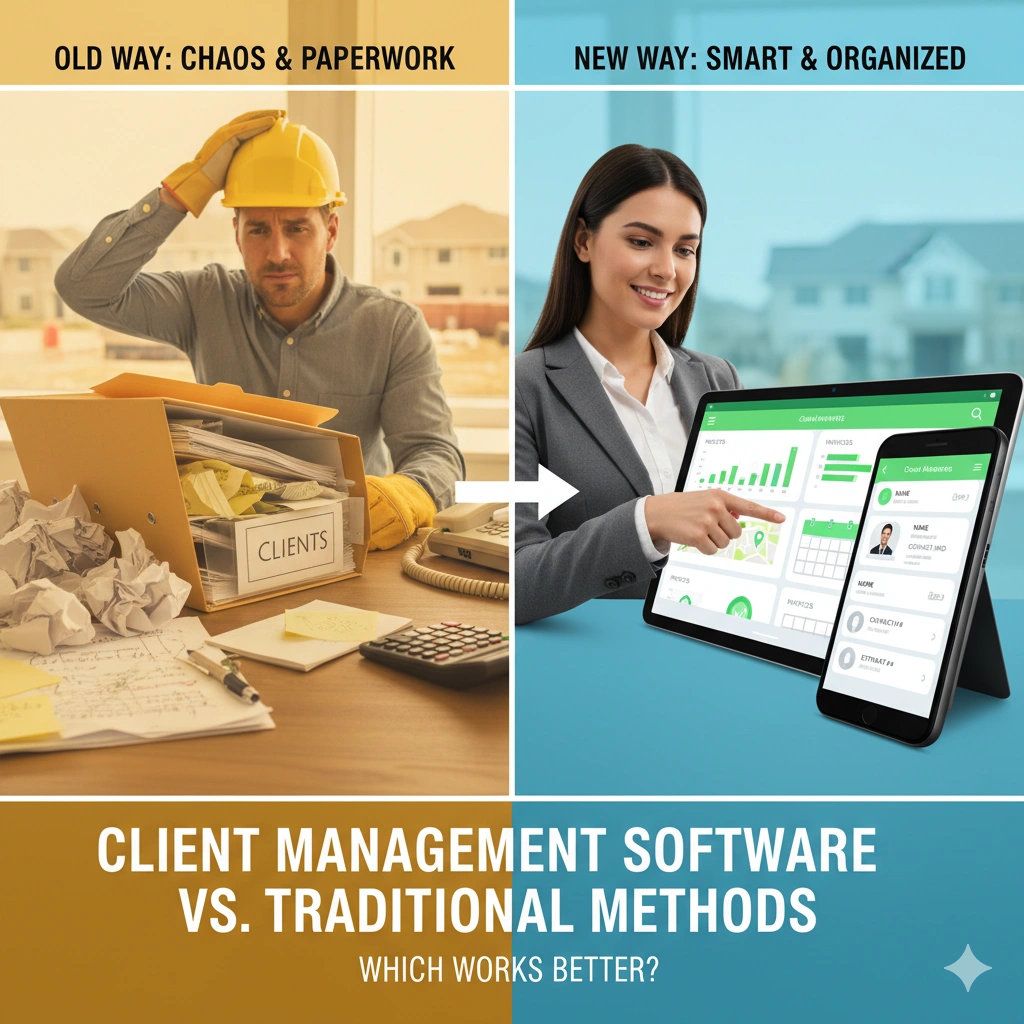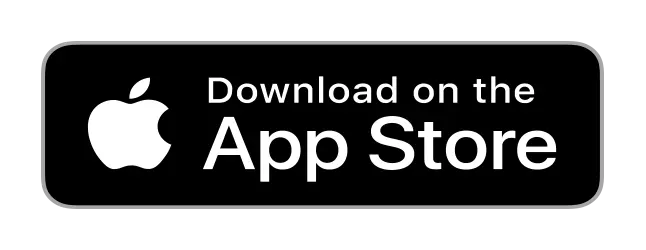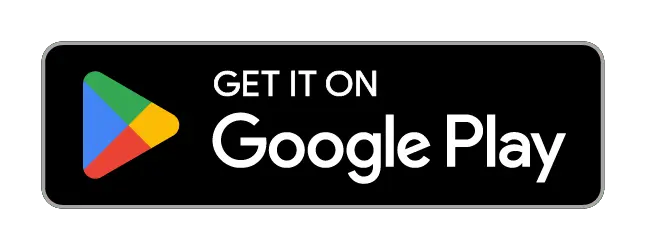
Service businesses today face a critical decision: stick with traditional client management methods or embrace modern software solutions. This choice can significantly impact your business efficiency, client satisfaction, and bottom line. Let's explore both approaches to help you determine which works better for your specific needs.
Understanding Traditional Client Management Methods
Traditional client management typically involves manual processes that many businesses have relied on for decades. These methods include paper-based filing systems, spreadsheets, physical calendars, and basic contact lists stored in notebooks or simple digital formats.
Many service professionals still use handwritten appointment books, maintain client information in filing cabinets, and track payments through basic accounting ledgers. While these methods have served businesses well historically, they come with inherent limitations in today's fast-paced business environment.
Traditional approaches often require significant time investment for data entry, filing, and retrieval. Service professionals spend considerable hours organizing paperwork, manually scheduling appointments, and tracking client communications across multiple disconnected systems.
The Rise of Client Management Software
Client management software represents a digital transformation in how service businesses handle customer relationships. These platforms integrate multiple business functions into unified systems that streamline operations and improve client experiences.
Modern solutions offer comprehensive features including automated scheduling, digital invoicing, payment processing, client communication tools, and detailed analytics. They eliminate much of the manual work associated with traditional methods while providing enhanced capabilities that weren't possible with paper-based systems.
The software approach centralizes all client information in easily accessible digital formats, enabling quick searches, automated reminders, and seamless integration between different business processes. This technological advancement has revolutionized how service businesses operate and interact with their clients.
Efficiency Comparison: Speed and Accuracy
When comparing efficiency between software and traditional methods, the differences are substantial. Client management software dramatically reduces the time required for routine tasks through automation and streamlined workflows.
Creating estimates that once took 30-45 minutes with traditional methods can be completed in 5-10 minutes using software templates and automated calculations. Scheduling appointments becomes instantaneous rather than requiring phone calls, calendar checks, and manual coordination.
Software solutions also significantly improve accuracy by eliminating human error in calculations, reducing double-bookings, and ensuring consistent information across all client touchpoints. Traditional methods are more prone to mistakes due to manual data entry and the difficulty of maintaining synchronized information across multiple systems.
The search and retrieval capabilities of software far exceed traditional filing systems. Finding specific client information, past invoices, or service history takes seconds with digital search functions, compared to minutes or hours with paper-based systems.
Cost Analysis: Initial Investment vs. Long-term Value
The cost comparison between software and traditional methods reveals interesting dynamics that vary based on business size and growth trajectory. Traditional methods appear less expensive initially, requiring only basic supplies like paper, filing cabinets, and simple tools.
However, the hidden costs of traditional methods accumulate over time. These include the opportunity cost of time spent on manual tasks, the expense of physical storage space, printing and supply costs, and the potential revenue loss from inefficient processes and missed opportunities.
Client management software typically requires monthly or annual subscription fees, but these costs are often offset by increased efficiency and improved client retention. The time savings alone can justify the investment, as service professionals can focus more on revenue-generating activities rather than administrative tasks.
For growing businesses, software becomes increasingly cost-effective as it scales without proportional increases in administrative overhead. Traditional methods often require additional staff or extended work hours as client bases expand.
Client Experience and Communication
The client experience differs significantly between traditional and software-based approaches. Traditional methods often involve more personal, direct communication but can be less convenient for modern clients who expect digital interactions.
Software solutions enable 24/7 client access to scheduling, invoices, and service information through client portals and mobile apps. Clients can book appointments, view estimates, and make payments at their convenience without requiring direct business hours contact.
Automated communication features in software platforms ensure consistent follow-up, appointment reminders, and service updates. Traditional methods rely on manual communication, which can be inconsistent and time-consuming for both businesses and clients.
However, some clients still prefer traditional, personal interactions and may feel that software-based communication lacks the personal touch they value in service relationships.
Data Management and Analytics
One of the most significant advantages of client management software is its data collection and analysis capabilities. Software platforms automatically track client interactions, service history, payment patterns, and business performance metrics.
This data enables informed business decisions about pricing, service offerings, client retention strategies, and growth opportunities. Traditional methods make it extremely difficult to analyze business trends or identify patterns in client behavior.
Software analytics can reveal insights such as seasonal demand patterns, most profitable services, client lifetime value, and operational efficiency metrics. This information is virtually impossible to extract from traditional paper-based systems without extensive manual analysis.
The reporting capabilities of software solutions provide real-time business intelligence that helps service professionals optimize their operations and identify growth opportunities that might otherwise go unnoticed.
Scalability and Growth Considerations
As service businesses grow, the limitations of traditional methods become increasingly apparent. Managing hundreds of clients through paper systems becomes unwieldy and error-prone, requiring significant administrative support.
Client management software scales naturally with business growth, handling increased client volumes without proportional increases in administrative burden. The same software interface and processes work effectively whether managing 50 or 500 clients.
Traditional methods often require complete system overhauls as businesses grow, while software solutions typically offer upgrade paths and additional features that accommodate expansion without disrupting existing workflows.
For businesses planning growth, software provides the infrastructure necessary to support expansion without the operational constraints inherent in traditional methods.
Security and Backup Considerations
Data security presents different challenges for both approaches. Traditional paper-based systems are vulnerable to physical damage from fire, flood, or theft, with limited backup options beyond photocopying or scanning documents.
Reputable client management software providers implement robust security measures including encryption, secure data centers, and regular backups. According to Cybersecurity Ventures, cloud-based business solutions often provide better security than individual businesses can implement independently.
However, software solutions do introduce cybersecurity risks that don't exist with paper systems. Businesses must ensure they choose providers with strong security practices and maintain good password hygiene and access controls.
The backup and recovery capabilities of software far exceed traditional methods, with most platforms offering automatic backups and quick restoration options that would be impossible with paper-based systems.
Integration with Other Business Tools
Modern client management software excels in integration capabilities, connecting with accounting software, payment processors, marketing tools, and other business applications. This creates seamless workflows that eliminate duplicate data entry and ensure consistency across all business systems.
Traditional methods operate in isolation, requiring manual transfer of information between different systems and increasing the likelihood of errors and inconsistencies. Integration between paper-based systems and digital tools is cumbersome and often incomplete.
The ability to integrate with banking systems, tax software, and industry-specific tools makes software solutions particularly valuable for comprehensive business management beyond just client relationships.
Learning Curve and Adoption Challenges
Traditional methods have the advantage of familiarity, requiring minimal learning for most service professionals. The processes are intuitive and don't require technical skills or training.
Client management software involves a learning curve that varies depending on the complexity of the chosen solution. However, modern platforms prioritize user-friendly interfaces that minimize training requirements.
The initial time investment in learning software typically pays dividends through increased efficiency and capabilities. Most service professionals find that the productivity gains justify the initial learning period.
Staff training and change management become considerations with software adoption, but these challenges are often outweighed by the long-term benefits of improved efficiency and client service.
Industry-Specific Considerations
Different service industries may favor one approach over another based on their specific requirements and client expectations. Industries like lawn care, HVAC, and photography each have unique needs that influence the software versus traditional methods decision.
Field service businesses often benefit significantly from mobile-enabled software that allows real-time updates and client communication from job sites. Traditional methods can't provide this level of connectivity and real-time information sharing.
Professional services that require detailed project tracking and time billing find software solutions particularly valuable for accurate invoicing and project management. Traditional methods make detailed time tracking and project analysis much more difficult.
Some industries with older client demographics might initially prefer traditional communication methods, but even these markets are increasingly embracing digital solutions as client expectations evolve.
Making the Right Choice for Your Business
The decision between client management software and traditional methods depends on several factors including business size, growth plans, client demographics, and personal preferences. However, the trend clearly favors software solutions for most service businesses.
Small businesses just starting might begin with traditional methods but should plan for software adoption as they grow. The transition becomes more difficult and disruptive the longer businesses wait to make the change.
Consider your current pain points with client management, growth objectives, and available resources when making this decision. The Small Business Administration emphasizes that staying competitive requires embracing technologies that improve efficiency and client service.
For most service businesses in 2025, client management software offers compelling advantages that outweigh the benefits of traditional methods. The efficiency gains, improved client experience, and scalability benefits make software the better choice for businesses focused on growth and competitiveness.
Implementation Best Practices
If you decide to transition from traditional methods to client management software, proper implementation is crucial for success. Start by thoroughly documenting your current processes and identifying specific areas where software can provide the most immediate benefits.
Choose software that aligns with your business needs and budget, considering factors like ease of use, integration capabilities, and customer support quality. Take advantage of free trials to test functionality before committing to a platform.
Plan for a gradual transition rather than attempting to change everything at once. Begin with core functions like client contact management and scheduling before expanding to more advanced features like automated invoicing and analytics.
Invest time in proper setup and data migration to ensure your software implementation provides maximum value from the start. Clean, well-organized data is essential for realizing the full benefits of client management software.
The choice between client management software and traditional methods ultimately comes down to your business goals and growth aspirations. While traditional methods may seem simpler initially, software solutions provide the foundation for sustainable growth, improved efficiency, and enhanced client satisfaction that modern service businesses need to thrive in competitive markets.

